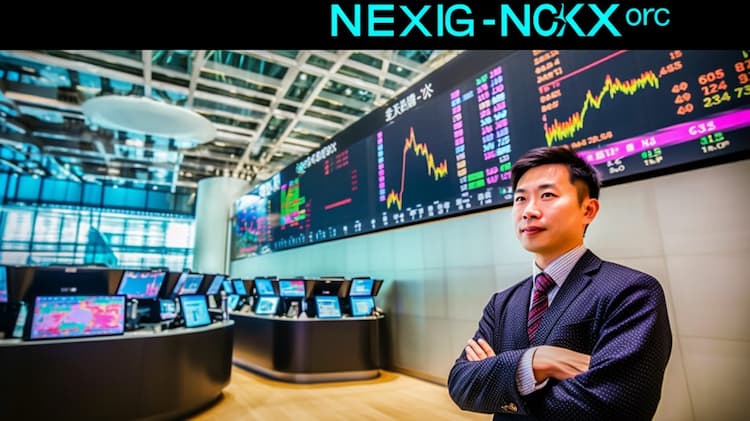
What stocks are in XLF?
When it comes to investing in exchange-traded funds (ETFs), it's essential to have a clear understanding of the underlying assets. In this article, we will explore XLF, a popular ETF, and answer some frequently asked questions about its composition. So, if you're wondering what stocks are in XLF, you've come to the right place!
What is XLF and Its Composition?
XLF, which stands for Financial Select Sector SPDR Fund, is an ETF that seeks to track the performance of the financial sector in the United States. It provides investors with exposure to a diversified portfolio of stocks from various sub-industries within the financial sector. The fund primarily invests in companies such as banks, insurance providers, diversified financial services, and real estate investment trusts (REITs). To gain a comprehensive understanding of XLF's holdings, it's advisable to refer to the official website of State Street Global Advisors, the fund's provider.
How are the Stocks in XLF Selected?
The stocks included in XLF are selected based on their market capitalization and liquidity within the financial sector. The ETF aims to provide exposure to companies that are representative of the sector's performance. To determine the weights of individual stocks within the fund, XLF utilizes a market-cap-weighted methodology. This means that larger companies have a more significant impact on the overall performance of the ETF. For more detailed information on the selection criteria and methodology, you can visit the official website of State Street Global Advisors.
 XLF overlap What stocks are in XLF?
XLF overlap What stocks are in XLF?
What are the Benefits of Investing in XLF?
Investing in XLF offers several benefits for individuals seeking exposure to the financial sector. By owning shares of this ETF, investors can gain diversified exposure to a broad range of financial companies without having to purchase individual stocks. XLF provides a convenient and cost-effective way to access the performance of the financial sector as a whole. Additionally, as XLF is traded on major stock exchanges, it offers liquidity and flexibility to investors. It's important to note that investing in XLF involves market risks, and potential investors should carefully consider their investment goals and risk tolerance.
How Can I Invest in XLF?
Investing in XLF is relatively straightforward. As an ETF, it can be bought and sold on major stock exchanges through brokerage accounts. Investors can purchase shares of XLF through their preferred brokerage platform, which may include online brokerages or traditional brokerage firms. It's important to consider any associated fees or commissions when investing in ETFs. Conduct thorough research and consult with a financial advisor to determine the best approach for investing in XLF based on your individual circumstances and investment goals.
In conclusion, XLF is an ETF that provides investors with exposure to the financial sector. The fund includes a diversified portfolio of stocks from various sub-industries within the financial sector, such as banks, insurance providers, diversified financial services, and REITs. Investing in XLF offers the benefits of diversification, convenience, and liquidity. However, it's important to remember that investing in ETFs involves market risks, and individuals should make investment decisions based on their own research and risk tolerance.
Disclaimer: This article is for informational purposes only and does not provide investment advisory services.
Source 1: XLF issuer website
Source 2: Reuters article about XLF
XLF quote and analysis
Discover the top holdings, correlations, and overlaps of ETFs using our visualization tool.
Our app allows you to build and track your portfolio.
To learn more about the XLF Financial Select Sector SPDR Fund, access our dedicated page now.
FAQ
What is XLF in the stock market?
XLF is the ticker symbol for the Financial Select Sector SPDR Fund. It represents an exchange-traded fund that aims to track the performance of companies in the financial sector of the U.S. stock market.
What index does XLF track?
XLF tracks the performance of the Financial Select Sector Index. This index is designed to reflect the performance of companies in the financial sector of the U.S. equity market.
Are there any alternatives to XLF for investing in the financial sector?
Yes, there are alternative options for investing in the financial sector. Investors can explore other ETFs or mutual funds that specifically focus on the financial sector. Additionally, investors can consider investing in individual financial stocks or other financial instruments, depending on their investment preferences and risk tolerance.
Does XLF pay dividends?
Yes, XLF pays dividends. As an ETF that holds stocks of financial companies, it collects dividend payments from the underlying companies in its portfolio and distributes a portion of those payments to XLF investors as dividends.
What stocks are in XLF?
XLF includes stocks of various companies in the financial sector, such as banks, insurance companies, asset management firms, and other financial institutions. Some examples of companies that have been included in XLF in the past include JPMorgan Chase, Bank of America, Wells Fargo, Citigroup, and Goldman Sachs.



